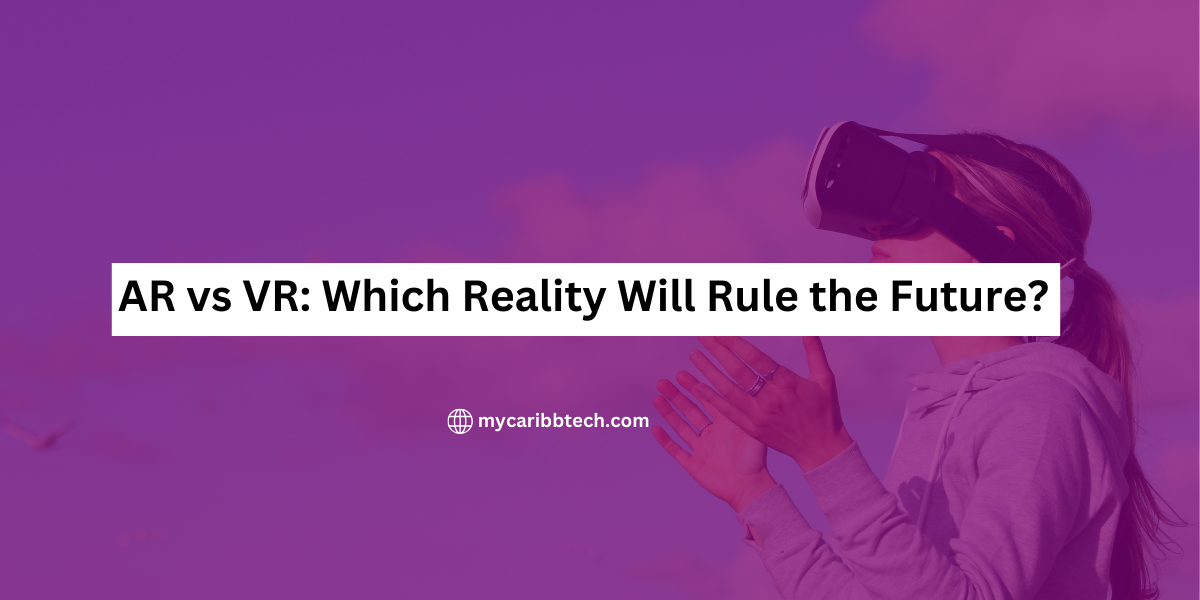The lines between reality and the digital world are blurring. AR vs VR are both rapidly evolving technologies that promise to reshape our experiences in profound ways. But with so much potential, a question looms large: which reality will ultimately rule the future?
Augmenting Our View: The Power of AR
AR seamlessly overlays digital elements onto the physical world. Imagine walking down the street and seeing restaurant menus pop up on building facades, or trying on clothes virtually before stepping foot in a store. AR blends information and interaction into our everyday surroundings, enhancing what we already see and do.
Its applications are vast and ever-growing. AR empowers industries like:
- Education: Imagine exploring historical battles virtually or dissecting a frog in 3D without leaving your classroom.
- Manufacturing: Technicians can overlay instructions and troubleshooting information onto equipment, streamlining repairs and maintenance.
- Healthcare: Surgeons can visualize organs and blood vessels during surgery, while patients can access their medical records through interactive overlays.
- Retail: AR experiences can bring products to life, allowing customers to see how furniture fits in their homes or try on makeup virtually.
Beyond practical applications, AR offers immense potential for entertainment and gaming. Imagine interacting with virtual characters in your living room, playing immersive games that blend the real and digital worlds, or even attending concerts and virtual tours from the comfort of your couch.
VR’s Immersive Dive: Escaping into Digital Worlds
While AR enhances our existing reality, VR transports us entirely into new ones. VR headsets create fully immersive environments, isolating us from the physical world and placing us in simulated landscapes, galaxies, or even historical scenarios.
VR excels in entertainment and gaming, offering unparalleled experiences:
- VR games let you climb mountains, explore alien planets, or fight dragons as if you were truly there.
- VR experiences can transport you to concerts, sporting events, or even historical landmarks, offering a level of presence and authenticity unmatched by traditional media.
VR also finds applications in fields like:
- Training: Pilots can practice flying in simulated environments, while soldiers can hone their skills in virtual battlefields.
- Therapy: VR exposure therapy can help treat phobias and PTSD, while providing safe and controlled environments for practicing social skills.
- Design and architecture: Architects can walk through 3D models of buildings before they’re even built, while VR-powered visualization tools can enhance collaboration and communication.
The Battle for Dominance: What Lies Ahead?
Both AR and VR have unique strengths and weaknesses, making it difficult to predict a clear winner. AR boasts accessibility and practicality, seamlessly integrating into existing environments and daily routines. VR, on the other hand, offers unparalleled immersion and escapism, creating wholly new and interactive worlds.
However, several factors may influence their future landscape:
- Technological advancements: Continued improvements in hardware, software, and processing power will make both AR and VR experiences more intuitive, immersive, and affordable.
- Content development: The quality and availability of captivating AR and VR experiences will be crucial for driving adoption and engagement.
- Integration with existing ecosystems: Seamless integration with smartphones, smart glasses, and other devices will be key to making these technologies truly mainstream.
A Hybrid Future: Collaboration, Not Competition
Ultimately, AR and VR may not be locked in a zero-sum competition. Instead, a future filled with hybrid experiences that combine the strengths of both technologies seems more likely. Imagine navigating a city with AR directions overlaid on your surroundings, then seamlessly entering a VR museum exhibit to learn about the history of the same street.
The possibilities are endless. AR can guide us in the real world, while VR can provide immersive educational or entertainment experiences. They can coexist and complement each other, enriching our lives in ways we can only begin to imagine.
So, the question of which reality will rule the future may be irrelevant. Both AR and VR hold immense potential to transform our world, and the most exciting possibilities lie in their synergy and collaboration, not their individual dominance. The future belongs to those who can embrace both realities and unlock the transformative power they hold.








